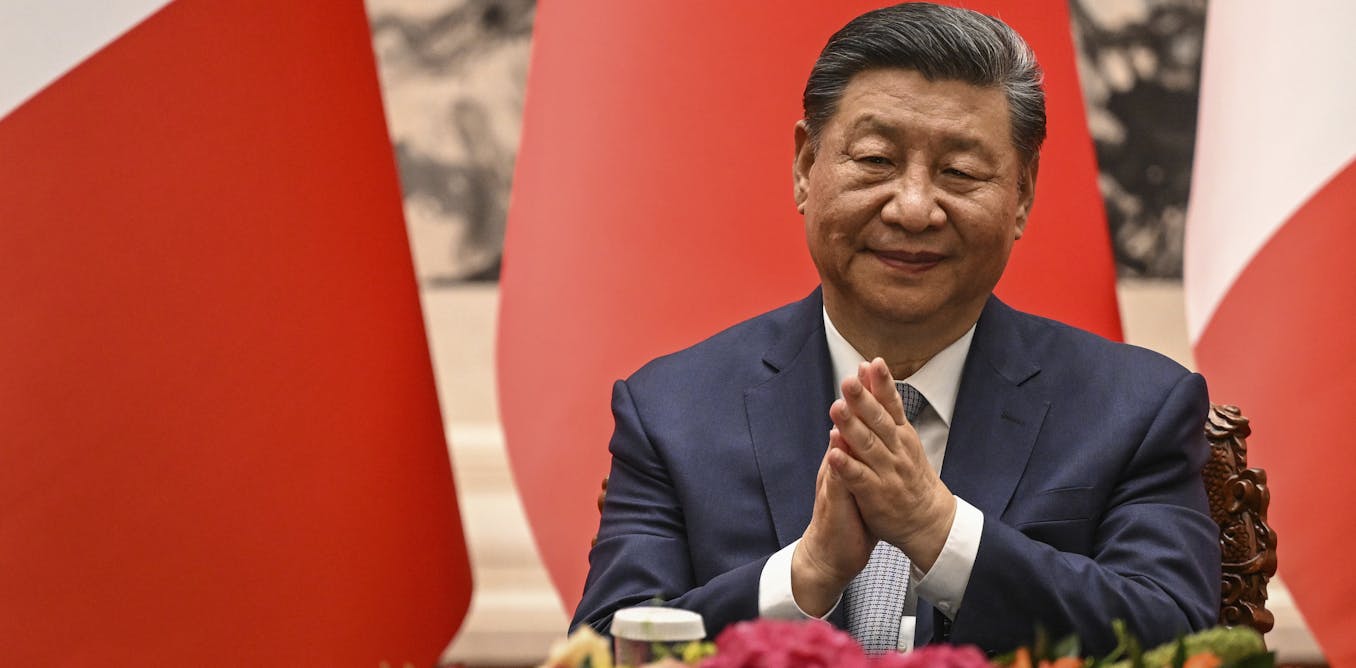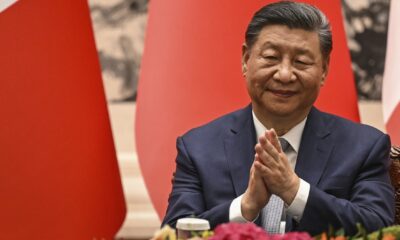China
China wins the mediation medal
Author: Rahul Karan Reddy, Organisation for Research on China and Asia
Recent developments in the Middle East have cast China as a reliable intermediary and proponent of multilateral dialogue, signalling a departure from Beijing’s typical reluctance to participate meaningfully in conflict negotiations.

Saudi Arabia and Iran’s decision to restore diplomatic relations has raised Beijing’s diplomatic profile and political influence. The agreement between the hostile Middle Eastern powers, facilitated by China and other regional states, was followed by Saudi Arabia’s decision to become a dialogue member of the Shanghai Cooperation Organisation, furthering the perception of China as a peacemaker. The initial agreement was followed by a meeting of the Saudi and Iranian foreign ministers in Beijing on 6 April 2023 where the countries agreed to restore direct flights and deliberated the resumption of government and private sector visits.
Although the detente may not result in normalised relations, China’s diplomatic win signals its increasing willingness and capability to participate in conflict resolution and shape negotiation outcomes in its favour. Beijing’s conflict management approach remains largely driven by its economic interests and desire to project a favourable image. It is characterised by participation without deep involvement. But China is laying the groundwork for deeper involvement and a value and norm-based approach to conflict management.
China’s role as a mediator has become prominent over the last decade. Beijing is more willing and able to influence the outcome of negotiations. Since the announcement of the Belt and Road Initiative (BRI) in 2013, Beijing’s involvement in conflicts has expanded beyond its traditional approach of limited engagement. Before 2013, China rarely participated in international mediation initiatives, preferring to be a neutral onlooker and retain flexibility.
Beijing’s recent diplomatic involvement in the Middle East, Afghanistan, Myanmar and Ethiopia reveal its intention to play a more political and diplomatic role in conflict zones. Still, China’s quasi-mediation approach, where it primarily defends its commercial and political interests, is driven by economic interests and international image. China’s interests in the Middle East, Africa and Asia in the form of the BRI and other trade and energy flows encourage Beijing to participate more actively in shaping the outcome of major diplomatic negotiations.
Take China’s participation in the Saudi–Iran rapprochement, where its energy imports are significant. In 2021, Saudi Arabia supplied China with 18 per cent of its crude oil needs. Beijing is Saudi Arabia’s largest purchaser of oil. Mutual dependence in Saudi–China relations encouraged China to participate as an influential mediator. Similarly, China is Iran’s most important economic partner, compelling Tehran to engage meaningfully in diplomatic negotiations with Saudi Arabia. China’s outsized economic influence in both countries gives it leverage to regulate their political behaviour through quasi-mediation.
China’s lack of historical baggage in the Middle East has also endowed it with the image of being a neutral mediator. Beijing’s BRI ventures, energy dependence and trade relationships also ensure that it remains invested in the long run. Securing a stable Middle East is in China’s interest just like maintaining a stable relationship with Beijing is in Riyadh and Tehran’s interest.
Image-driven considerations also determine China’s participation in conflicts, evidenced by its peace proposals in Ukraine. China’s peace plan in Ukraine has less to do with ending the war and more to do with cultivating its peacemaker image. The plan presented China as a neutral mediator, a position that resonates strongly with developing countries.
French President Emmanuel Macron highlighted China’s potential peacemaker role in the conflict and urged President Xi Jinping to ‘bring everyone back to the negotiating table’. This underlines the growing perception that Beijing’s involvement in mediating conflicts is necessary to produce meaningful resolutions.
While unsuccessful, China’s attempts at mediating in the Middle East between the Taliban and Afghanistan governments and in South Asia between Bangladesh and Myanmar reaffirm its posture as a mediator and provide a contrast to US-led conflict mediation efforts. Beijing has also expanded its diplomatic engagement in Africa, most notably in Ethiopia — a central hub in the BRI….
China
Italy and China New DTA Set to Take Effect in 2025: Important Changes and Implications

Italy ratified an upgraded Double Tax Agreement (DTA) with China, effective in 2025, to reduce tax burdens, prevent evasion, and enhance investment. The DTA introduces modern provisions aligned with international standards, targeting tax avoidance and improving dispute resolution for Italian businesses.
Italy recently ratified the upgraded Double Tax Agreement (DTA), which will finally take effect in 2025. This agreement was signed in 2019 and was designed to reduce tax burdens, prevent tax evasion, and promote Italian investment in China.
On November 5, 2024, Italy’s Chamber of Deputies gave final approval to the ratification of the 2019 Double Tax Agreement (DTA) between Italy and China (hereinafter, referred to as the “new DTA”).
Set to take effect in 2025, the new DTA is aimed at eliminating double taxation on income, preventing tax evasion, and creating a more favorable environment for Italian businesses operating in China.
The ratification bill for the new DTA consists of four articles, with Article 3 detailing the financial provisions. Starting in 2025, the implementation costs of the agreement are estimated at €10.86 million (US$11.49 million) annually. These costs will be covered by a reduction in the special current expenditure fund allocated in the Italian Ministry of Economy’s 2024 budget, partially drawing from the reserve for the Italian Ministry of Foreign Affairs.
During the parliamentary debate, Deputy Foreign Minister Edmondo Cirielli emphasized the new DTA’s strategic importance, noting that the agreement redefines Italy’s economic and financial framework with China. Cirielli highlighted that the DTA not only strengthens relations with the Chinese government but also supports Italian businesses, which face increasing competition as other European countries have already established double taxation agreements with China. This ratification, therefore, is part of a broader series of diplomatic and economic engagements, leading up to a forthcoming visit by the President of the Italian Republic to China, underscoring Italy’s commitment to fostering bilateral relations and supporting its businesses in China’s complex market landscape.
The newly signed DTA between Italy and China, introduces several modernized provisions aligned with international tax frameworks. Replacing the 1986 DTA, the agreement adopts measures from the OECD/G20 Base Erosion and Profit Shifting (BEPS) Project and the OECD Multilateral Instrument (MLI), targeting tax avoidance and improving dispute resolution.
The Principal Purpose Test (PPT) clause, inspired by BEPS, is one of the central updates in the new DTA, working to prevent treaty abuse. This clause allows tax benefits to be denied if one of the primary purposes of a transaction or arrangement was to gain a tax advantage, a move to counter tax evasion through treaty-shopping.
| This article was first published by China Briefing , which is produced by Dezan Shira & Associates. The firm assists foreign investors throughout Asia from offices across the world, including in in China, Hong Kong, Vietnam, Singapore, and India . Readers may write to info@dezshira.com for more support. |
Read the rest of the original article.
Business
China’s New Home Prices Stabilize After 17-Month Decline Following Support Measures

China’s new home prices fell for the 17th month in October, declining 0.5% from September, but slowing, indicating potential market stabilization amid supportive measures. Second-hand home prices showed mixed trends.
Decline in China’s Home Prices Stabilizes
China’s new home prices continued to decline in October for the 17th consecutive month, although the drop showed signs of slowing. Recent support measures from Beijing appear to be inching the market toward stabilization, as evidenced by a lighter decline compared to earlier months.
Monthly and Yearly Comparisons
According to the latest data from the National Bureau of Statistics, new home prices across 70 mainland cities fell by 0.5% from September, marking the smallest decrease in seven months. Year-on-year, prices dropped by 6.2%, slightly worse than the September decline of 6.1%. In tier-1 cities like Beijing and Shanghai, prices decreased by 0.2%, a smaller fall than 0.5% in the previous month.
Second-Hand Home Market Trends
Second-hand home prices in tier-1 cities experienced a 0.4% increase in October, reversing a 13-month downward trend. Conversely, tier-2 cities observed a 0.4% drop in second-hand prices, while tier-3 cities faced a similar 0.5% decline. Overall, recent trends indicate a potential stabilization in China’s property market.
Source : China’s new home prices slow 17-month decline after support measures kick in
China
U.S. national debt is its Achilles’ heel, but China sees it as an opportunity

China is emerging as a dominant force in the Global South, challenging U.S. dollar hegemony by increasing gold reserves and reducing U.S. debt holdings, aiming for a multipolar economic landscape.
China is gradually establishing itself as a major player in what has recently been called the Global South, previously known as the Non-Aligned Movement. Over the last few decades, China has become the world’s biggest creditor of developing countries. That has prompted many to fear that it will subjugate partners through the “debt trap” and use this to establish a “hegemonic sphere of influence.”
China’s economic position is so strong that it is now considered the main threat to the U.S. dollar. It is an influential member of the BRICS+ group (which also includes Brazil, Russia, India and South Africa). This group is working to establish a multipolar world that challenges the hegemony of the West, specifically the leadership of the United States. I analyzed this issue in a previous article.
Without using the term “threat,” the U.S. administration now sees China as the “most serious long-term challenge” to the international order. It’s easy to understand why, since China’s strategic objective is to put an end to the supremacy of the U.S. dollar, the keystone of U.S. hegemony.
As a researcher in international political economy at the Université Laval, I am looking at the role China is playing in the dedollarization of the world.
The stronghold of the U.S. dollar
The supremacy of the U.S. dollar underpins American hegemony in the current international order, as French economist Denis Durand explains in his article Guerre monétaire internationale: l’hégémonie du dollar contestée? (International currency war: the dollar’s hegemony challenged?).
In addition to the fact that several currencies are linked to the dollar by a fixed link or band of fluctuation, American currency is also used in many Third World and Eastern European countries, where it enjoys a much higher level of public confidence than do local currencies. […] The United States is the only power that can incur foreign debt in its own currency.
The hegemony of the U.S. dollar over the world economy is reflected in its over-representation in the foreign exchange reserves held by the world’s central banks. The greenback still outstrips other currencies even though there has been some erosion in this.
Despite a fall of 12 percentage points between 1999 and 2021, the share of the U.S. dollar in the official assets of the world’s central banks remains fairly stable at around 58-59 per cent.
U.S. currency still enjoys widespread confidence around the world, reinforcing its status as the preeminent reserve currency. The U.S. dollar reserves of the world’s central banks are invested in U.S. Treasury bills on the U.S. capital market, helping to reduce the cost of financing both government debt and private investment in the United States.
However, the income generated for the U.S. economy by the hegemony of its dollar could also collapse like a house of cards. Durand makes this point when he writes that “the monetary hegemony of the United States […] is held together only by the confidence of economic agents around the world in the American dollar.”
There are two reasons that the world’s confidence in the U.S. dollar could decrease.
Firstly, as U.S. Treasury Secretary Janet Yellen admitted in an interview in April 2023, the United States is unequivocally using its dollar as a tool to bend enemies — but also some recalcitrant allies — to its will. This could ultimately undermine the dollar’s hegemony.
On the other hand, the U.S. debt situation, particularly its unsustainability, is a source of concern that could affect the dollar’s attractiveness as a global reserve currency.
Unsustainable debt
The U.S. dollar has been at the heart of the international monetary system since 1944, and even more so since the Bretton Woods Agreement came into force in 1959.
The Bretton Woods system was based on both gold and the greenback, which was the only currency convertible into gold; this convertibility was fixed at the rate of $35 per ounce.
That changed on Aug. 15, 1971, when, because of inflation and the growing imbalances in the United States’ international economic relations, Richard Nixon announced the end of the dollar’s convertibility into gold.
With the dollar pegged to gold, the United States’ ability to take on debt to meet public spending was limited. Under the gold-based system, where gold was the guarantor of the U.S. currency, the United States could only borrow according to the quantity of dollars in circulation and its gold reserves.
Abandoning the gold-based system gave the U.S. free rein over its debt. In 2023, the U.S. public debt reached more than $33.4 trillion, nine times the country’s debt in 1990.
This astronomical figure continues to raise concerns about its long-term sustainability. As U.S. Federal Reserve Chairman Jerome Powell has pointed out, U.S. debt is growing faster than the economy, making it unsustainable in the long term.
An opportunity for China
This is a reality to which China is clearly attuned, since it recently undertook a massive sell-off of the U.S. debt it owned. Between 2016 and 2023, China sold $600 billion worth of U.S. bonds.
However, in August 2017 China was the United States’ largest creditor, ahead of Japan. It held more than $1.146 billion in U.S. Treasuries, almost 20 per cent of the amount held by all foreign governments. Beijing is now the second-largest foreign holder of U.S. debt, with a claim of around $816 billion.
It is certainly no coincidence that before divesting itself of U.S. bonds, Beijing first launched its own gold pricing system in yuan. In fact, on April 19, 2016, the Shanghai Gold Exchange, China’s operator for precious metals, unveiled on its website its first “fixed” daily benchmark for gold at 256.92 yuan per gram.
This policy is part of China’s strategy to make gold a tangible guarantee of its currency.
China’s “Gold for Dollars” strategy
China is also selling its U.S. bonds. According to the U.S. Treasury, between March 2023 and March 2024, China sold off $100 billion in U.S. Treasuries, on top of the $300 billion it had already sold off over the past decade.
At the same time, the Middle Kingdom has replaced around a quarter of the U.S. Treasuries sold in 10 years with gold, of which it is now the leading producer and consumer. Like China’s central bank, other central banks in emerging countries continue to buy gold.
China’s appetite for gold was confirmed in 2010, when its gold reserves rose to 1,054 tonnes, from around 600 tonnes in 2005. Ten years later, in 2020, its stock of gold had almost doubled again, to nearly 2,000 tonnes. By the end of 2023, with a gold reserve of 2,235 tonnes, China will be the country with the sixth-largest gold reserve.
As a substitute for the dollar, gold enables China to store the gains from its large trade surpluses. With the Shanghai Gold Exchange, which offers gold trading contracts in Yuan, Beijing is seeking to strengthen the use of its currency abroad with the aim of establishing the yuan as the benchmark currency for the global economy.
This article is republished from The Conversation under a Creative Commons license. Read the original article.






